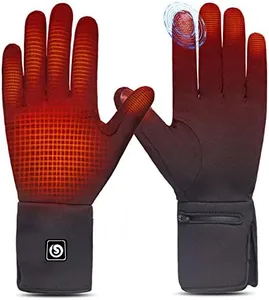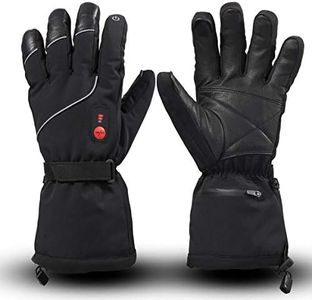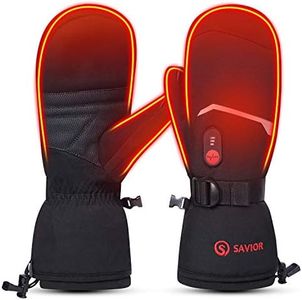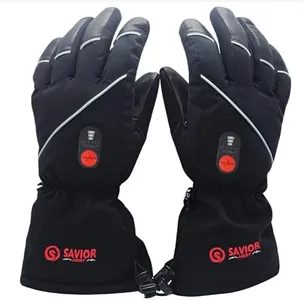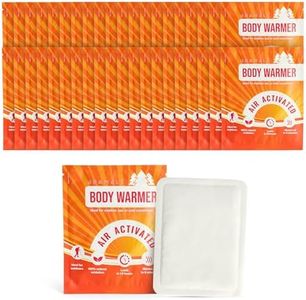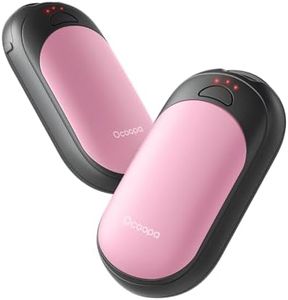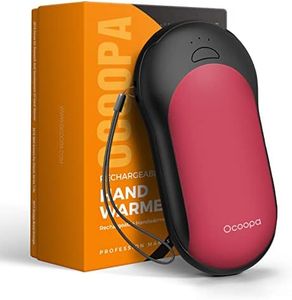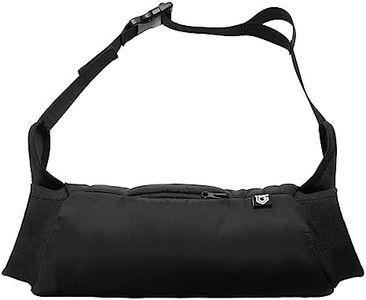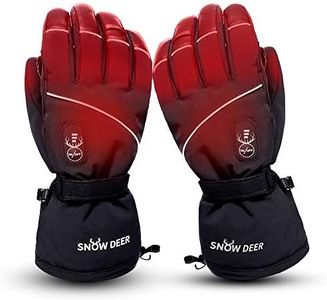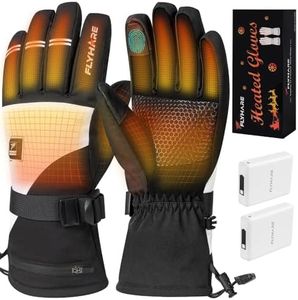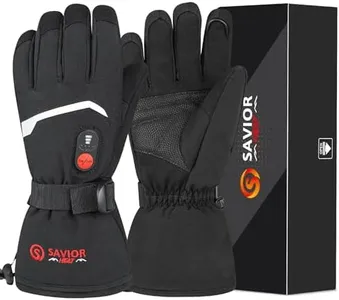10 Best Heated Gloves 2025 in the United States
Our technology thoroughly searches through the online shopping world, reviewing hundreds of sites. We then process and analyze this information, updating in real-time to bring you the latest top-rated products. This way, you always get the best and most current options available.

Our Top Picks
Winner
SAVIOR HEAT Heated Glove Liners for Men Women, Rechargeable Battery Electric Heated Gloves, Winter Warm Thin Liners for Skiing, Snowboarding, Hiking, Cycling, Hand Warmers
Most important from
1485 reviews
The SAVIOR HEAT Heated Glove Liners are designed to provide warmth during cold outdoor activities like skiing, snowboarding, and hiking. One of the key strengths of these liners is their compatibility with thicker outer gloves, which helps to enhance warmth and comfort while allowing for dexterity. The gloves are made from a soft Lycra material with a breathable fleece lining, making them comfortable to wear for extended periods.
These liners feature a rechargeable battery that provides up to six hours of heat, depending on the setting chosen. With three adjustable heat levels, users can customize their warmth based on the conditions. The heating elements cover the entire back of the hand and fingers, ensuring effective heat distribution. One notable convenience is the touchscreen compatibility, allowing users to operate their phones without removing the gloves. This is particularly beneficial for those on the go in chilly environments.
There are some drawbacks to consider. Although these liners are effective on their own, they perform best when paired with thicker gloves, which some users might find cumbersome. The battery life could be shorter for those needing warmth for longer durations, and purchasing extra batteries might be necessary for extended outdoor activities.
Most important from
1485 reviews
SAVIOR HEAT Heated Gloves, Unisex Rechargeable Battery Powered Electric Heating Glove for Winter Outdoor (Black S14, Large)
Most important from
1909 reviews
The SAVIOR HEAT Heated Gloves are well-suited for winter outdoor activities such as skiing. They come equipped with three adjustable heating levels, ensuring you can customize the warmth according to your preference. The heating elements cover the back of the hand and fingers, though notably, the palm area remains unheated. This might be a drawback for those needing full-hand warmth.
A standout feature is the touchscreen compatibility, enabling you to use your devices without removing the gloves, which is a big plus in cold weather. Crafted with high-quality materials such as lambskin on the palm and a soft velvet interior, these gloves promise comfort and durability. The shell is IPx4 water-resistant, adding to their suitability for snowy or damp conditions. The fit is designed to be ambidextrous and available in large size, but it’s essential to ensure the size matches your needs for best comfort.
They have a 1-year warranty, but some users might find the single color option limiting and the need for hand washing as an inconvenience. These gloves balance between practical features and comfort, making them a solid choice for adults engaging in winter sports or other outdoor activities, albeit with a few considerations regarding heating coverage.
Most important from
1909 reviews
SAVIOR HEAT Heated Mittens Battery Ski Gloves, Electric Rechargeable Mitts for Skiing Camping Hiking Arthritis Hands Men Women
Most important from
996 reviews
The SAVIOR HEAT Heated Mittens are designed to keep your hands warm in very cold conditions, especially for activities like skiing, snowboarding, or hiking. One standout feature is the extra heating elements in the thumb area, which many gloves neglect, providing more balanced warmth across fingers and thumbs. With three heat settings (high, medium, low) reaching up to 140°F, you can adjust the temperature to your comfort.
The 7.4V rechargeable battery offers a solid runtime of up to 8 hours on low heat, which is longer than many competitors, making them reliable for extended outdoor use. The mittens use a combination of seven layers including windproof, water-resistant, and insulating materials, ensuring durability and keeping moisture out while still feeling breathable and soft inside. They come with adjustable Velcro straps for a snug fit and have an anti-slip palm, which helps with grip. Touchscreen-compatible fingertips are a convenient feature, allowing you to use your phone without taking off the gloves.
The product is currently offered in a small size only, which might not fit everyone comfortably. Also, while the mittens are lightweight for their warmth, mittens by nature provide less finger dexterity than gloves, so consider if that fits your needs. These mittens are well suited for outdoor enthusiasts and those sensitive to cold who want dependable and long-lasting warmth with the convenience of touchscreen use.
Most important from
996 reviews
Buying Guide for the Best Heated Gloves
Heated gloves are a fantastic solution for keeping your hands warm in cold weather, whether you're skiing, hiking, or just spending time outdoors. When choosing the right pair of heated gloves, it's important to consider several key specifications to ensure you get the best fit and functionality for your needs. Understanding these specs will help you make an informed decision and enjoy the warmth and comfort that heated gloves provide.FAQ
Most Popular Categories Right Now
